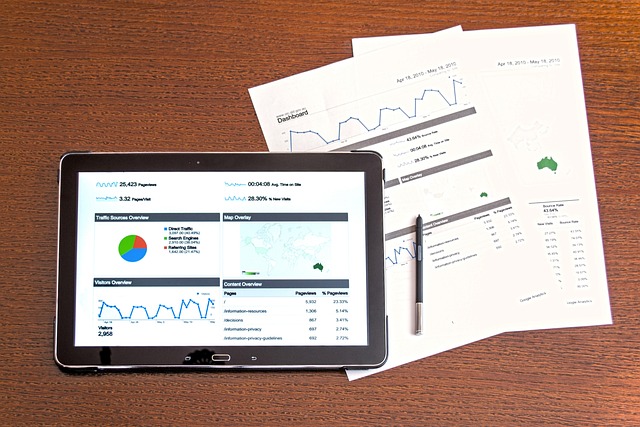Introduction
As a digital marketing enthusiast, I've witnessed the ever-evolving landscape of marketing strategies. One approach that has gained significant attention and success in recent years is intent-based marketing strategy.
In this article, we'll explore the intricacies of intent-based marketing, understanding what it is and how it works, while also referencing credible sources to provide you with a comprehensive guide.
Unveiling the Essence of Intent-Based Marketing Strategy
1. Defining Intent-Based Marketing
Intent-based marketing strategy is a dynamic approach that centers around understanding and capitalizing on the intent of potential customers. Unlike traditional marketing that casts a wide net hoping to catch prospects, intent-based marketing is precise, targeting individuals who have already demonstrated an interest or intent related to your product or service.
Key Elements of Intent-Based Marketing:
Let's lay the foundation by examining the key elements of intent-based marketing strategy:
a. Intent Signals: Intent-based marketing relies on collecting and analyzing intent signals from various sources. These signals can be explicit, such as search queries or social media interactions, or implicit, like browsing behavior and engagement metrics.
b. Data Analysis: Advanced data analytics and artificial intelligence play a crucial role in processing intent signals to identify potential customers actively searching for solutions or products.
c. Personalization: Intent-based marketing tailors content and messages to align with the specific intent of individual prospects, enhancing relevance and engagement.
d. Timely Engagement: The strategy focuses on reaching out to prospects at the right moment when their intent is at its peak, increasing the likelihood of conversion.
e. Continuous Optimization: Intent-based marketing is an iterative process that requires ongoing analysis and optimization to adapt to changing intent signals and customer behaviors.
Also Read
· The Apple Marketing Strategy
· The Amazing Nike Marketing Strategy
· Why Starbucks Marketing Strategy Is Successful
Understanding How Intent-Based Marketing Works
2. The Mechanics of Intent-Based Marketing
Intent-based marketing strategy operates on a foundation of data, technology, and precision targeting. Let's dissect how it works:
1. Data Collection:
Intent signals are collected from various sources, including:
Search Engines: Analyzing search queries and keywords to understand what users are actively seeking.
Social Media: Monitoring social media interactions, comments, and mentions related to specific topics or products.
Website Analytics: Tracking visitor behavior on your website, such as page views, click-through rates, and time spent on pages.
Email Engagement: Analyzing email open rates, click-through rates, and response behavior.
Third-party Data: Leveraging external data sources to enrich intent data.
2. Intent Identification:
Sophisticated algorithms and machine learning models process the data to identify intent signals. This involves categorizing users based on their intent, such as informational, transactional, or navigational intent.
3. Content Personalization:
Once intent is identified, content and messaging are tailored to match the prospect's specific needs and intent. This could involve displaying product recommendations, providing in-depth content, or offering exclusive deals.
4. Timely Engagement:
Intent-based marketing strategy emphasizes reaching out to prospects at the most opportune moment. For example, sending a promotional email when a prospect is actively browsing product pages on your website.
5. Retargeting and Remarketing:
Prospects who have shown intent but haven't converted may be retargeted with follow-up ads, emails, or content to keep their interest alive.
The Impact of Intent-Based Marketing Strategy
3. Measuring Success and Impact
Intent-based marketing strategy has yielded remarkable results for businesses across various industries. Here's how it creates an impact:
a. Improved Conversion Rates: By engaging prospects with personalized content when their intent is high, businesses can significantly boost conversion rates.
b. Enhanced Customer Experience: Personalized experiences build trust and resonate with prospects, fostering positive relationships.
c. Reduced Wastage: Traditional marketing often involves reaching uninterested or unqualified prospects. Intent-based marketing minimizes wastage by targeting those with genuine interest.
d. Cost Efficiency: Precise targeting leads to more cost-effective marketing campaigns, as resources are allocated where they are likely to yield the best results.
e. Customer Insights: Intent-based marketing generates valuable insights into customer behavior and intent, informing product development and marketing strategies.
f. Competitive Advantage: Leveraging intent signals allows businesses to stay ahead of competitors by responding to customer needs in real-time.
Resources and Further Reading
4. Exploring the World of Intent-Based Marketing
For a deeper understanding of intent-based marketing strategy, consider exploring these credible resources:
1. Google's Guide to Intent-Based Marketing
2. HubSpot's Intent-Based Marketing Strategy : Dive into HubSpot's insights on leveraging intent data to drive marketing success.
3. Salesforce's Insights on Intent Signals : Discover how intent signals can supercharge your Account-Based Marketing (ABM) strategy.
4. Moz's Guide to SEO and Intent : Understand the intersection of SEO and user intent, a critical aspect of intent-based marketing.
Conclusion
Intent-based marketing strategy has ushered in a new era of precision marketing, where businesses can engage with prospects based on their actual intent. By harnessing the power of data, technology, and personalization, intent-based marketing allows brands to not only reach their audience but also meet their needs at the right moment.
As we navigate the digital marketing landscape, it's evident that understanding and effectively leveraging intent-based marketing strategy can be a game-changer for businesses. So, whether you're a seasoned marketer or just beginning your journey, consider embracing intent-based marketing as a potent tool to connect with your audience on a deeper and more meaningful level.

